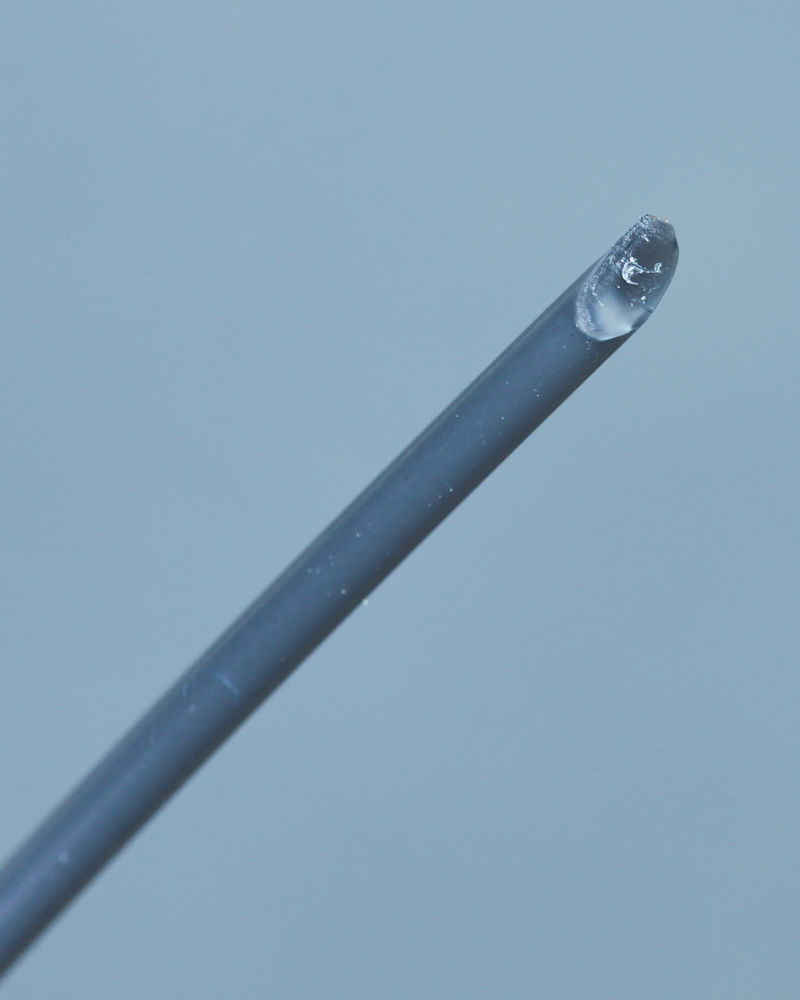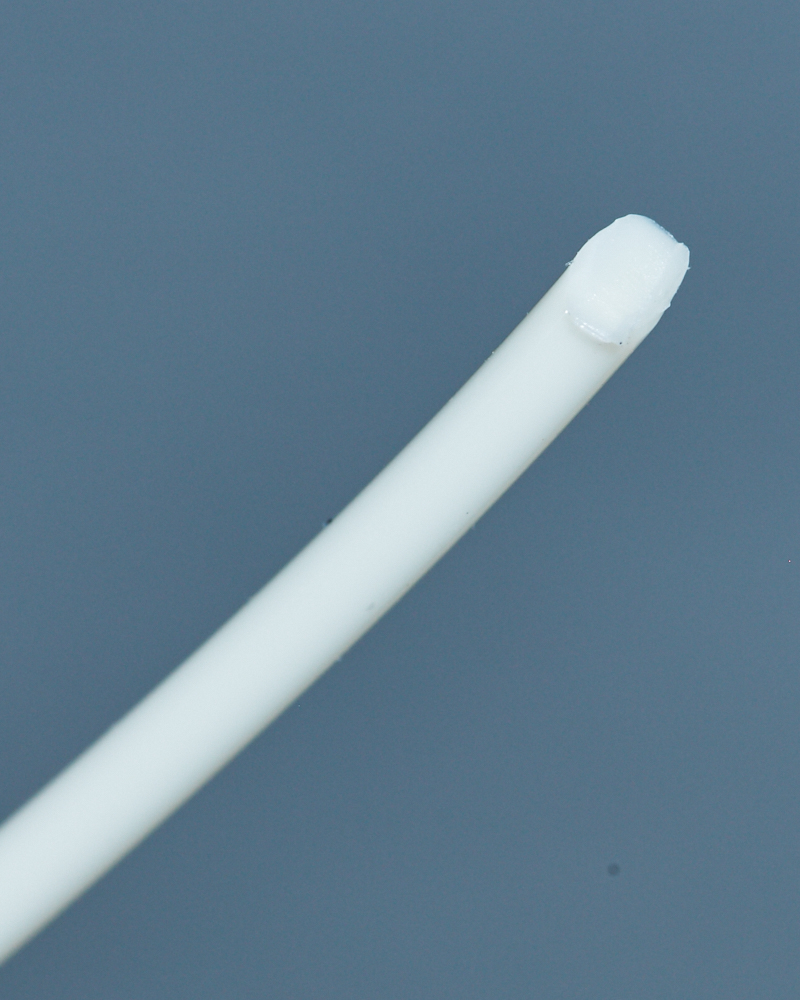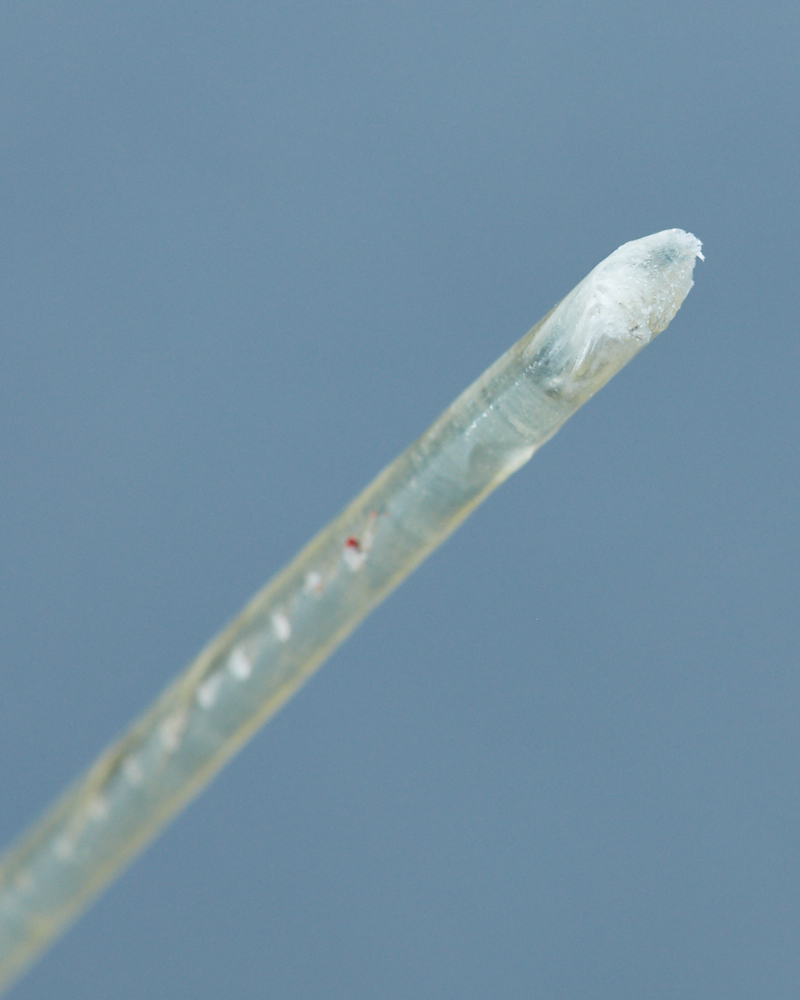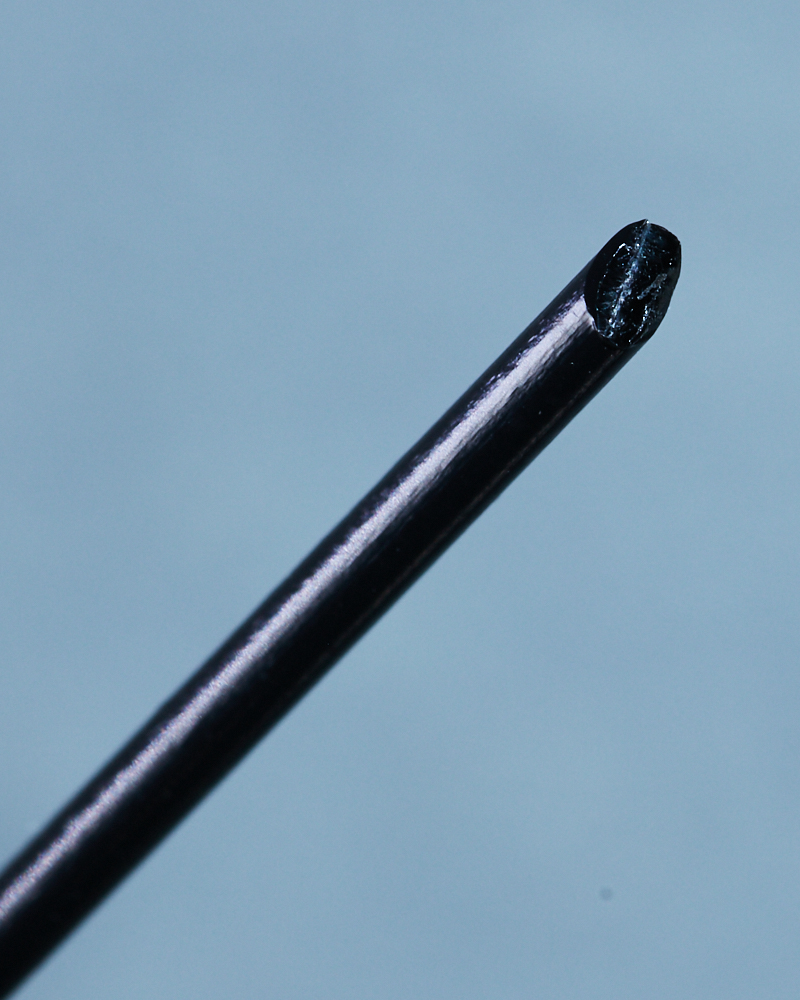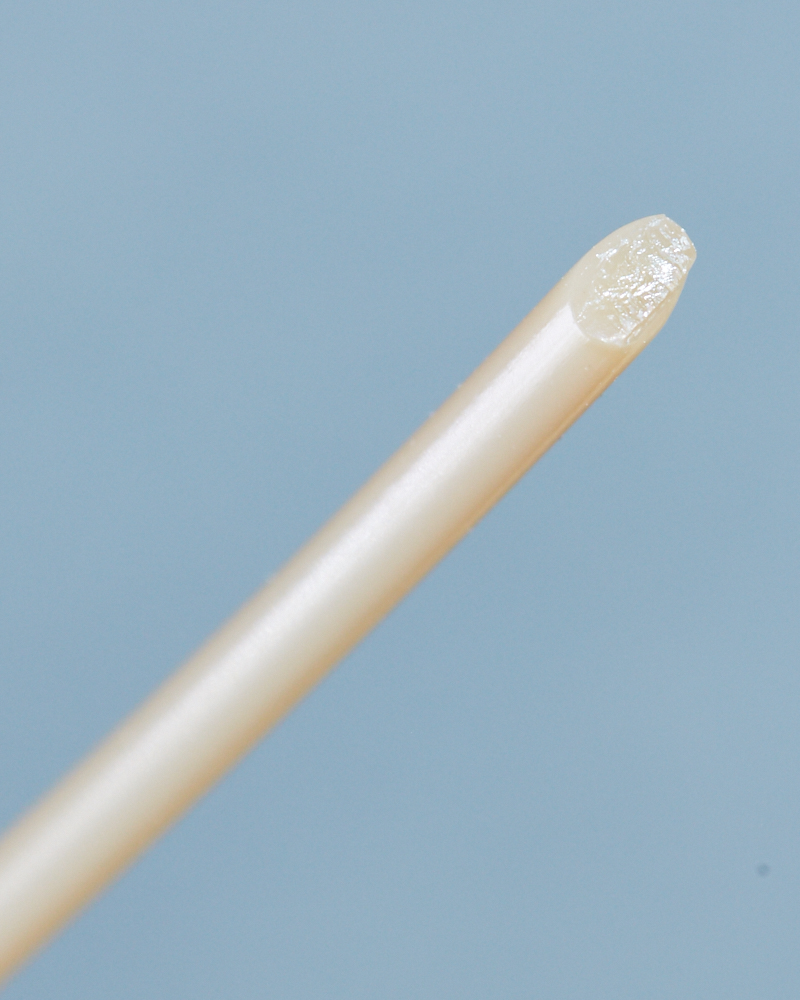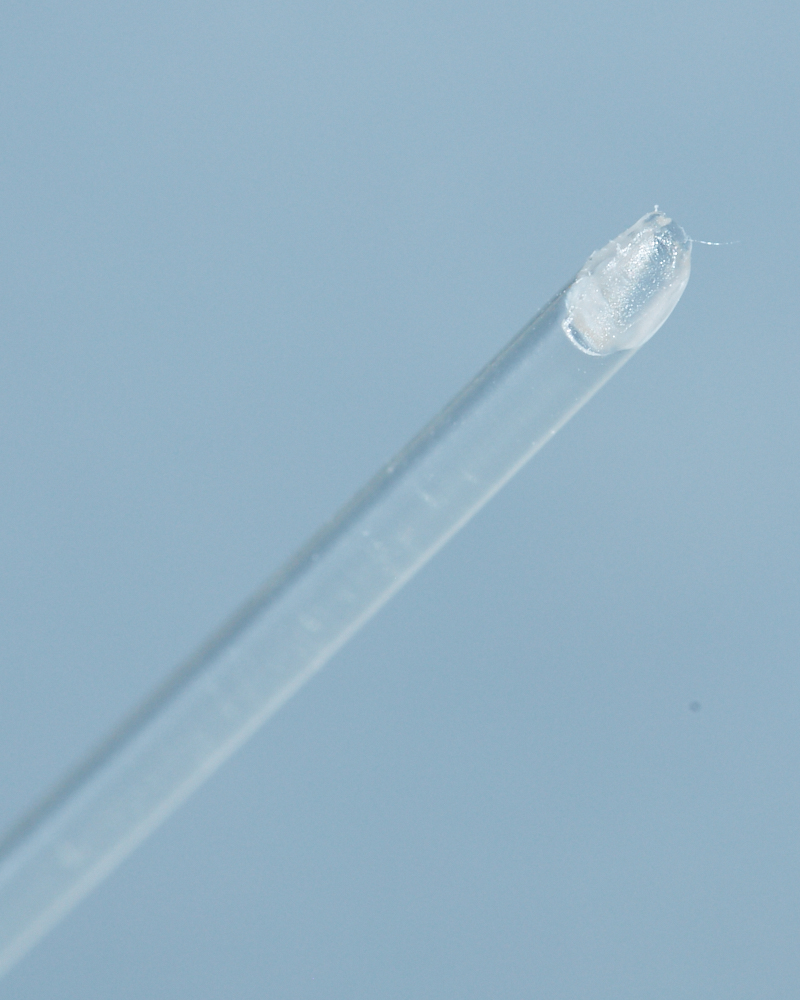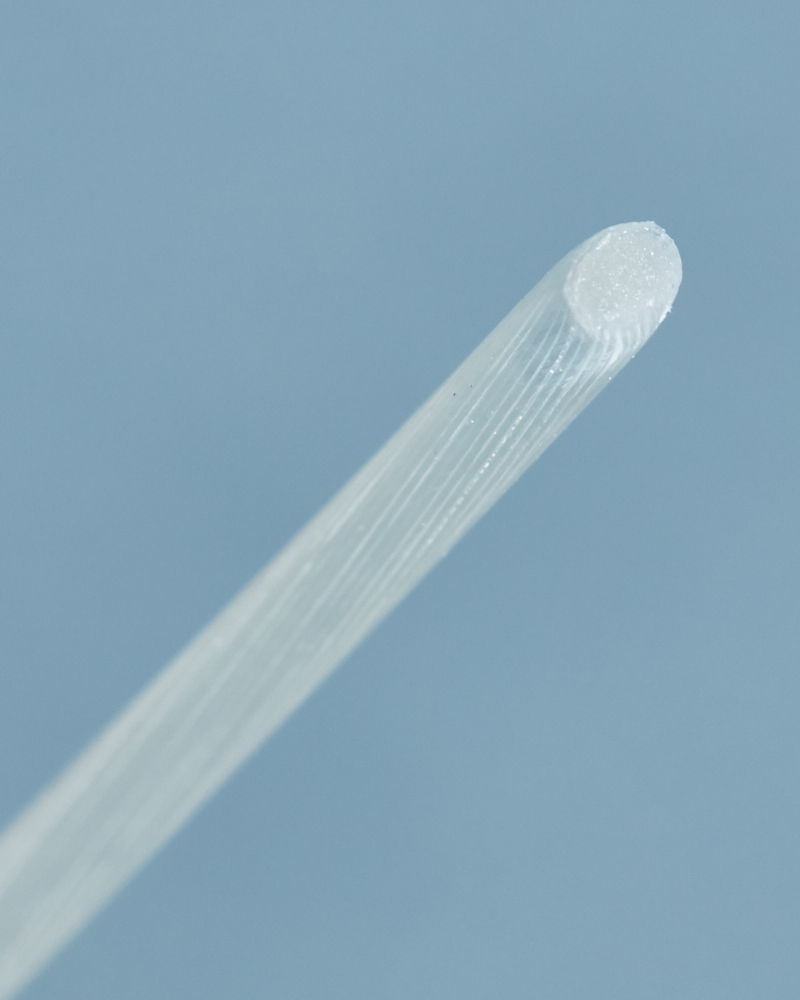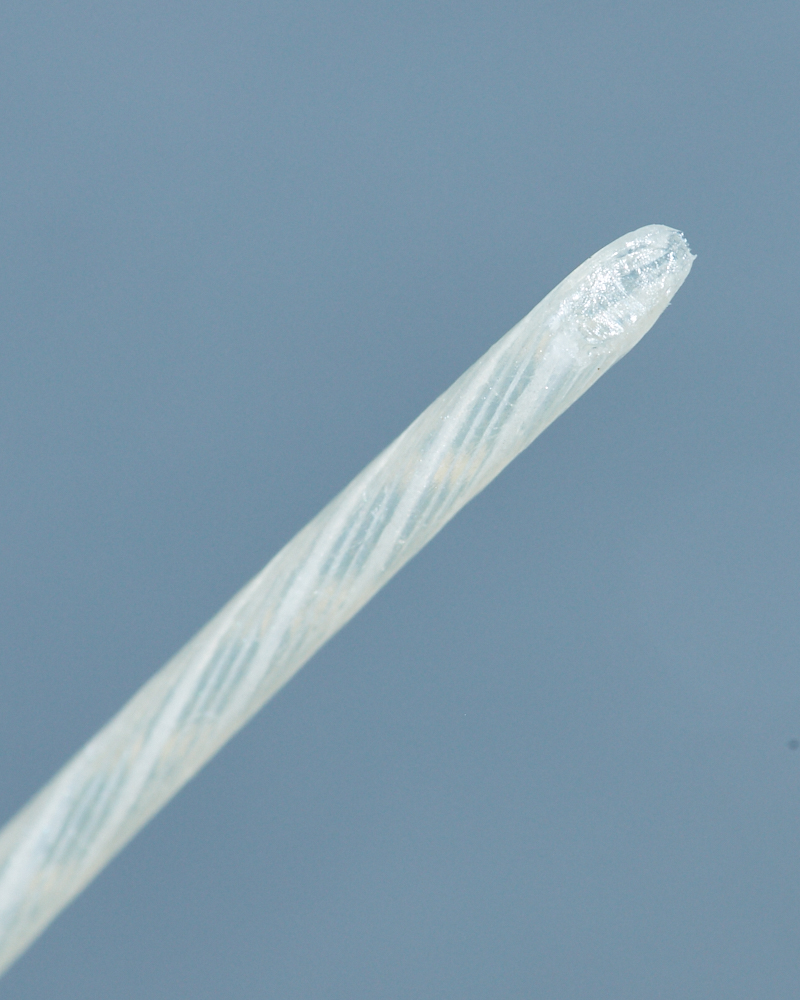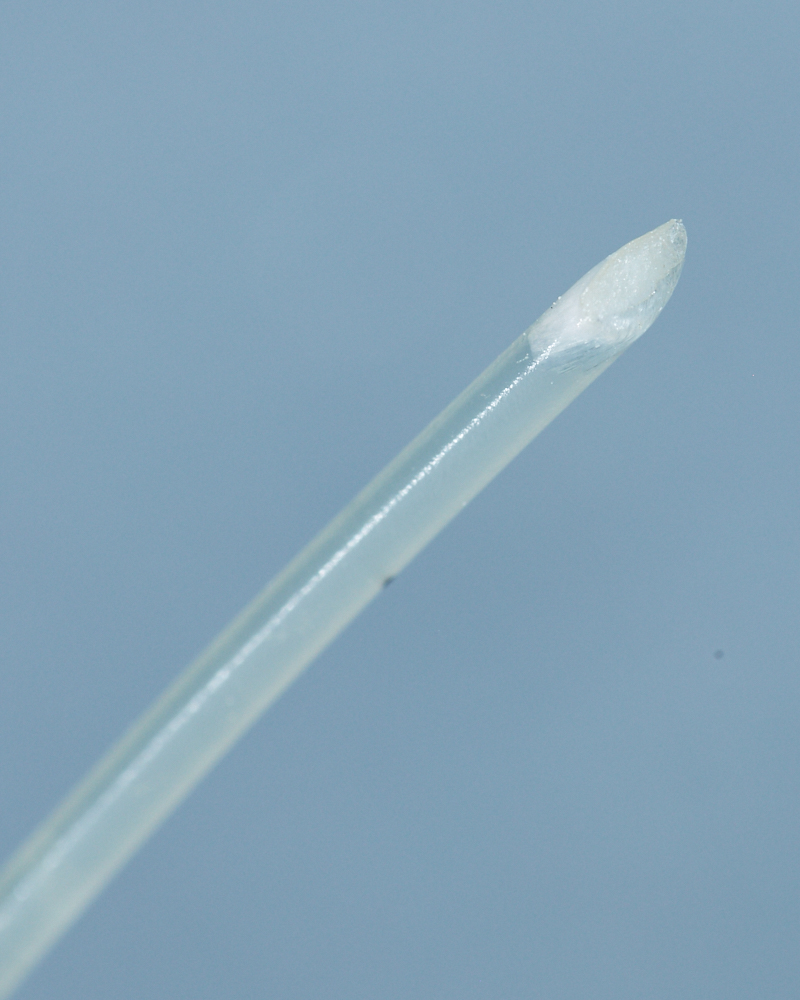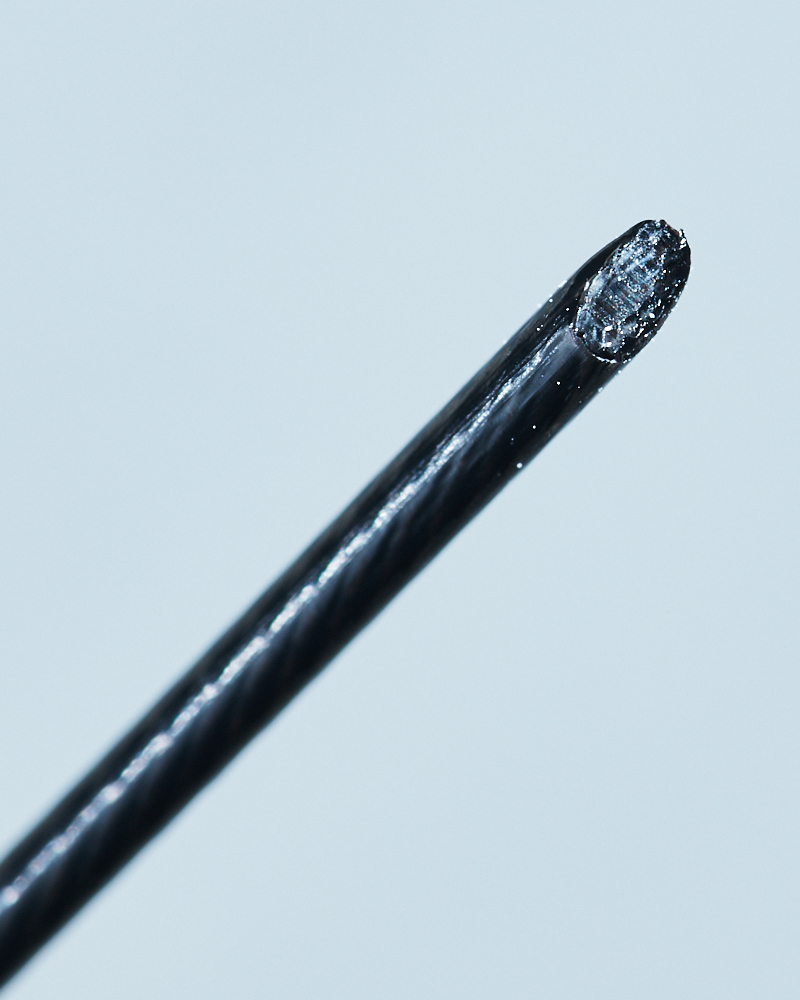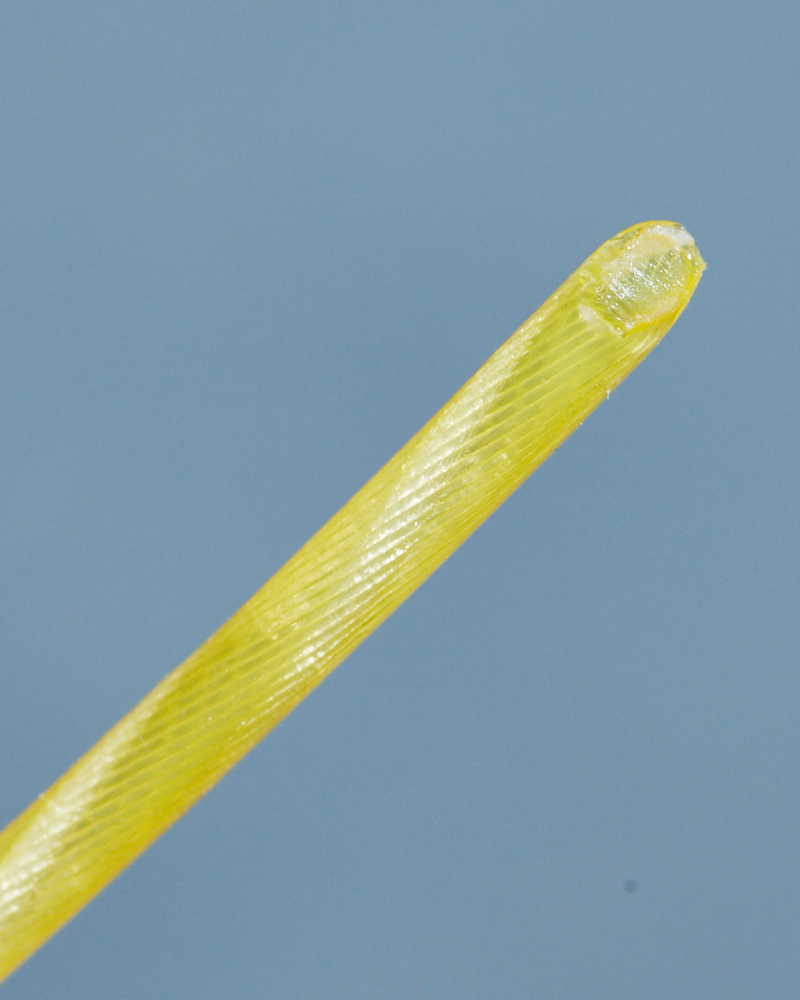Fluorocarbon Strings
A single extruded monofilament, Fluorocarbon is also used in fishing lines. Fluorocarbon is more abrasion resistant than standard nylon monofilament of the same diameter and is almost as soft as natural gut. Plus, while the sun’s harsh ultraviolet rays weaken nylon over time, fluorocarbon shrugs off UV with no ill-effects. It is also known by the name brand as Teflon. Because of its slick, frictionless nature, Fluoro is always used as the cross string. This allows the main strings to snap back without much interference and impart much more spin on the ball. The jury is out whether or not this is a revolutionary material for tennis strings. Some people have used it without good results. I personally think it really depends on what is put in the mains and I have found a couple of strings to work quite well paired with Fluoro crosses
Have you ever noticed the pro’s who use polyester strings in the mains and natural gut strings in the crosses? Andy Murray, Alexander Zverev, Tommy Paul use this hybrid. Why do they do this? I personally think it’s to save their arms. They keep the performance and feel from their favorite poly in the mains...
Considered by many to be the crem da la crem of polyesters. Used by so many professionals, it is THE standard of top tier polyester tennis strings. So many people consider this to have the perfect amount of stiffness and power. It also loses playability THE FASTEST. Average playability is around 1-4 hours (depending on...
So many companies have released a “soft” variant of their poly string because they are realizing that their strings are destroying arms. But the “soft” versions aren’t truly soft. They’re honestly worse. They hold tension worse and they go dead faster. However Solinco’s soft variant of their famed Hyper G is, in my opinion, JUST...
Solinco is an American company that is making waves in NCAA collegiate and also professional tennis. The Solinco strings I’ve chosen are pretty darn amazing for spin, tension maintenance and longevity. Yes, it lasts just a little longer than normal poly (a few hours of play) which, I think, makes it pretty special. Plus these...
Poly is infamous for 2 things: extreme stiffness losing tension Then came along Isospeed Cream! They also stopped calling it poly and gave it a new name: co-poly. That’s because there were so many additional ingredients they couldn’t simply call it poly. I dunno, I’m not a chemical engineer. Cream was one of the first...
One of the early soft polys, Head Sonic Pro 16g has proven to be a go-to choice for those who want the poly characteristics minus the harshness. It has the stiffness of a nylon “synthetic gut” however it loses tension quite quickly so it is best suited for high level competitive players who will restring...
Tried and true since the 80s and 90s Gosen continues to produce some of the best “synthetic gut” strings. I simply call them nylon because it’s the exact material they are made. Manufacturers called it “synthetic gut” because it sounded more sexy. A perfect mix of crispness and power, these strings are a really good...
Can you really improve on the OG of tennis string? Yes, you DEFINITELY can and it’s some amazing stuff. So just think of all the amazing properties of natural gut (soft, powerful, comfortable and playable until it breaks) without ANY of the problems (swells and breaks with moisture, frays quickly). Yes, my head is dunked...
This black PEEK monofilament is the newer version of the PEEK family. Since it is a monofilament, it is smooth and slick and is amazing for spin. This color behaves slightly more like polyester than the natural colored PEEK. Meaning it plays slightly firmer and is a little more dynamic so I think it imparts...
This is the string that started my whole journey. I was in the middle of multiple arm injuries and I needed to find a string setup that didn’t cause more injuries. During my quest I discovered chatter about a string that is as soft as natural gut but as slick as polyester. I had to...
A single extruded monofilament, Fluorocarbon is more abrasion resistant than standard nylon monofilament of the same diameter. It is almost as soft as natural gut and has just as much power. Plus, while the sun’s harsh ultraviolet rays weaken nylon over time, fluorocarbon shrugs off UV with no ill-effects. It is also known by the...
I think when they started manufacturing multifilaments to immitate natural gut, there were probably some other chemists and structural engineers who were like, let’s go in the OPPOSITE direction. Why? Why not! In these modern tennis times of spin/polyester/RPMS I think it finally makes sense. Racquets are so powerful now to compensate for the low...
If you can manufacture ANY property into a string, why not infuse such popular poly properties into a multifilament? So this company put poly fibers into their multifilament to create a really interesting string. It’s soft like a multifilament but has similar stretch and low power properties of a poly. I personally think it’s brilliant.
Not soft and mushy like some multifilaments. This one is crisp and powerful. Like how some of us wish natural gut was. This multifilament is actually a little stiff by comparison but that also makes it an easier transition if you’re coming from the world of polys. String manufacturers have been trying to imitate the...
Also known as “synthetic gut”. I think this is the most misleading description of a string, ever. It is NOTHING like gut. It’s stiff and doesn’t give. It’s basically nylon. Most synthetic strings actually are made of nylon. But it’s much sexier to call it “synthetic gut” than “nylon”. Having said that, nothing is wrong...
You’ve seen the words, “Synthetic gut” used for a string. It’s a sexy term for something that is basically made of nylon. Nylon=plastic. Plastic ≠ gut. Gut is made of stretchy cow intestine. So is synthetic gut a synthetic “gut”? You be the judge. But the string (whatever you want to call it) is still...
Kevlar is the brand name but the material is called Aramid. They are fibers that have more tensile strength than steel. Meaning they don’t break when they are stretched. It’s the same stuff they put into bulletproof vests.

